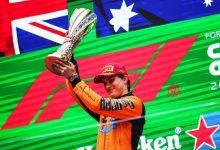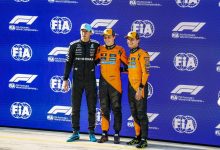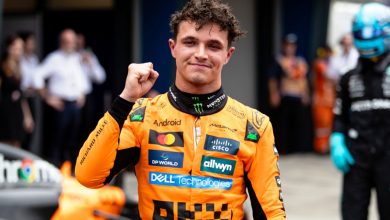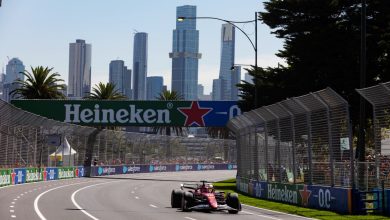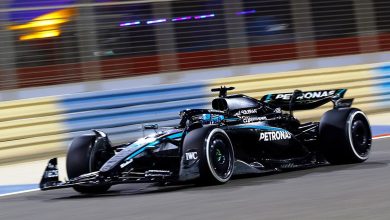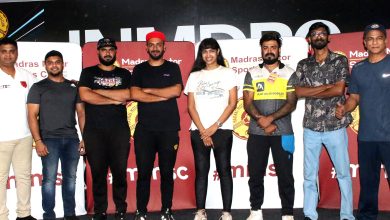PIRELLI nominates Medium and Soft P Zero Tyres unlike last year
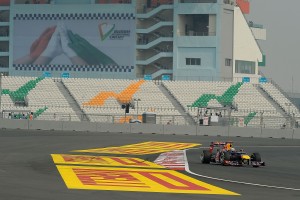
Milan, 24 Oct 2013 : India, a new addition to the Formula One calendar in 2011, features some sweeping elevation changes and a wide variety of corners, making it a truly spectacular venue that works the tyres hard, especially given the high ambient temperatures. After two years of nominating the hard and the soft compound at the Buddh circuit, this year Pirelli has opted to nominate the P Zero White medium tyre together with the P Zero Yellow soft tyre.
Paul Hembery: “We’ve decided to go for the P Zero White medium and P Zero Yellow soft tyres in India this year, which we think will be the best combination for the Buddh circuit and lead to closer racing. For the last two years running we’ve actually gone for the hard and soft compounds, which might have been slightly on the conservative side, so this year we’ve gone for a softer and slightly more aggressive choice. As a result, just like the last race in Japan, we’re not expecting to see a particularly big variation in lap times between the two compounds. Consequently, the strategy made a very big difference in Japan and this should be the same in India. We only had one pit stop per car in India last year, but this year we would expect two – which also provides the drivers and teams with more opportunities to make up places. With varying elevations and a wide variety of corners India provides the tyres with quite a test, as there are forces coming from all directions, so tyre management will once again prove to be important. As usual, it should be very warm in India, which increases thermal degradation as well. This looks set to be a decisive race for the championship so we hope that our tyre choice will help to make it a memorable contest with high-quality racing.”
Jean Alesi: “Before we talk about India, I’d just like to go back to the Japanese Grand Prix, which is a race that I very much enjoyed watching. I think it really showcased the difference that strategy can make, and the incredible thing is what a close result you can see even with completely different strategies being used. The tension and spectacle this creates for those of watching the race is fantastic. As for India, it’s not actually a circuit that I’ve ever raced on myself but I’ve heard some positive comments from the drivers. There is a bigger picture though: I think that having races in territories such as India is tremendously important because there is huge sporting and commercial potential. As well as driving the cars, the drivers have a real responsibility to be ambassadors for the sport: to awaken the public’s interest in Formula One and all the people who are involved in it. That ambassadorial role is so much more important in places like India than Monza, for example, which has hosted Formula One for many years already. You see tremendous enthusiasm for sport generally in India, particularly cricket, and it would be fantastic if Formula One could have the same sort of following.”
The circuit from a tyre point of view:
One of the most challenging areas of the circuit is the complex that makes up Turns 10 and 11: both of which are taken in quick succession almost as single corner. The tyres have to withstand a high-energy lateral force for around seven seconds. The front-left tyre is worked hardest here, and it has to withstand an acceleration force of up to 4g on the exit of the corner, where maximum grip is needed to hold the racing line.
Turn 4 is another crucial area of the circuit. Here, the cars decelerate from 320kph to 90kph in just 140 metres. The tyres are subjected to a deceleration force of 3.6g, but still have to guarantee stability and precision throughout the braking area.
India also has one of the longest straights of the year, which is more than a kilometre long. The tyre rotates around 50 times per second at full speed, and by the end of the straight the temperature on the tread can exceed 100 degrees centigrade.
Technical tyre notes:
The pit lane in India is one of the longest in Formula One at around 600 metres. This leads to a relatively significant time loss when changing tyres, which is an important factor when considering the race strategy.
The track surface in India is generally not very abrasive. However, having made its debut only two years ago, the asphalt is still evolving. Over time, new asphalt tends to get rougher, as the bitumen on the surface is swept away, leaving the stones that make up the asphalt exposed. This increases abrasion, which has an effect on tyre wear.
All the finishers at last year’s race – where the hard and the soft compound were used – stopped once only, at around lap 30. The most popular strategy by a long way was to start on the soft compound and finish on the hard compound, although one or two drivers further down the grid used the opposite strategy to their advantage.
Meet the Pirelli F1 Team: Fabrizio Tanfani, Chef
They say that an army marches on its stomach, and Pirelli is no exception. Not only that, but Pirelli’s guests are also able to experience the Italian firm’s catering, which has been popularly acclaimed as the best in the paddock. The man behind the magic is chef Fabrizio Tanfani: one of the most talented people in Formula One. He tells a fascinating story. “I started cooking when I was 16 years old: my passion for it came from my mother and my aunt and uncle, because food was like a religion in our house,” he says. “The real good fortune I had though was having friends and relatives who fished and hunted, so from a very young age I had access to the best and freshest ingredients and I found out how to get the best out of them.”
It was inevitable that Fabrizio would go to catering school, which he describes as an exciting period in his life as he learned new techniques and worked with other young chefs. In 2005 he met Christian Staurenghi, who heads up Pirelli’s hospitality, and Christian tried him out in Formula One. “I was quite nervous to begin with as there were some famous drivers and personalities around, but as soon as I started cooking and began to smell the flavours of the food, I relaxed because I was doing what I loved,” recounts Fabrizio. “And here I’ve been ever since…”
Fabrizio is in charge not only of cooking the food, but also of devising the menus and shopping for ingredients (supplemented by some uniquely Italian ingredients that are transported from Italy to the races). It’s very hard work as the catering team are the first to arrive each morning but the last to leave at night: “I’d like to thank my colleagues in the kitchen and the girls who work so hard in the hospitality,” adds Fabrizio. When he’s at home Fabrizio enjoys reading, running, music and – incredibly – cooking dinner for large groups of his friends…
Other news from Pirelli:
At the final round of the Italian Rally Championship, the Sanremo Rally, Pirelli clinched the manufacturers’ title with Peugeot Italia for the fifth time. The drivers’ title had already been wrapped up by Umberto Scandola, driving a Pirelli-equipped Skoda, on the previous round.
Pirelli has sponsored a professorship at one of the most prestigious universities in the United States. Pirelli has established the “Pirelli Visiting Professorship in Italian Studies” for a five-year term at Princeton University in New Jersey. Its aim is to promote the study of Italian history and culture.
Pirelli has launched a brand new bespoke P Zero road car tyre for the recently-revealed Alfa Romeo 4C, which lapped the Nurburgring in 8m04s on Pirelli P Zero Trofeo tyres. The new tyre has been specifically made to match the Alfa Romeo’s performance characteristics, with ‘AR’ branding on the sidewall.
The final round of the Pirelli-backed British Rally Championship also took place last weekend. Citroen driver Osian Pryce won the rally on Pirelli tyres while former Pirelli UK Star Driver Jukka Korhonen clinched the title.
ends

